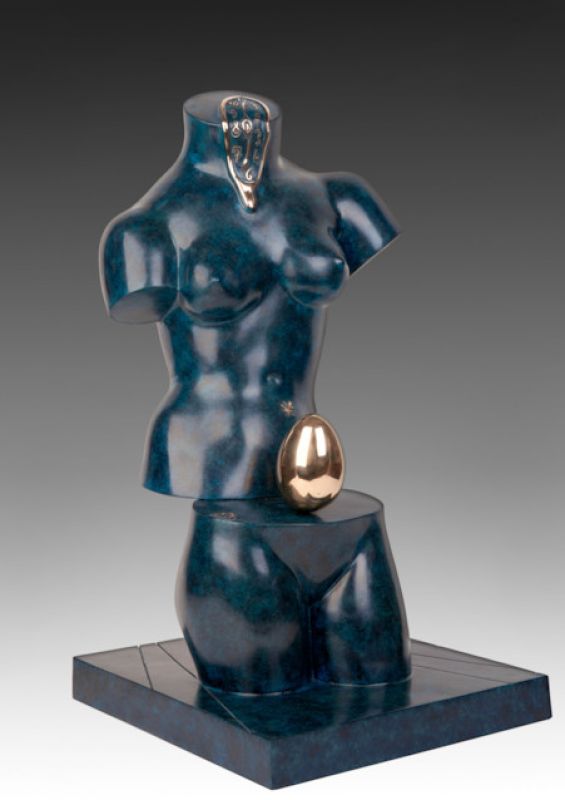Dali
Space Venus
Bronze, 65 cm
Chat with us on WhatsApp
About the artwork
Venus is the goddess of beauty and Dalí pays homage to the female figure and his attraction to female beauty in this sculpture, by adding his own surreal elements. The underlying form in this sculpture is of a classic female torso, to which four Dalinian symbols are added: a soft watch, ants, an egg and a separation of the body into two parts. The watch is draped over the neck to give us two opposing messages, that beauty of the flesh is temporary and will vanish, while beauty of art is timeless and eternal. Ants crawl across the abdomen; they are symbols of decay and decomposition. Dalí watched ants as a child with both fascination and repulsion, he used them often in his oeuvre, and they serve as a reminder of human mortality. The sculpture is divided into two, revealing an egg. The egg is a favorite Dalinian theme given the duality of its hard exterior and soft interior and is a positive symbol. It represents life, renewal, continuation and the future. On the clock face the numbers five and eleven are missing, did Dalí wish to indicate the date he was born?
About the artist
Born on May 11, 1904, in Figueres, Spain, Salvador Dalí’s
eccentric nature and talent for self-promotion made him the most famous
representative of the surrealist movement and one of the most widely recognised
artists in the world. Identified as an artistic prodigy from a tender age, Dalí attended the drawing school at the Colegio de Hermanos Maristas and the
Instituto in Figueres, Spain in 1916. In 1922, he enrolled in the Academia de
San Fernando in Madrid and received recognition during his first solo show
held in Barcelona in 1925. Dalí became internationally known after the third
annual Carnegie International Exhibition in Pittsburgh in 1928 and grew to
immense notoriety and fame. Today, his sculptures and paintings are exhibited
in the most prestigious museums in the world and part of many coveted private
and public collections.
Go to Dali's profile ›


